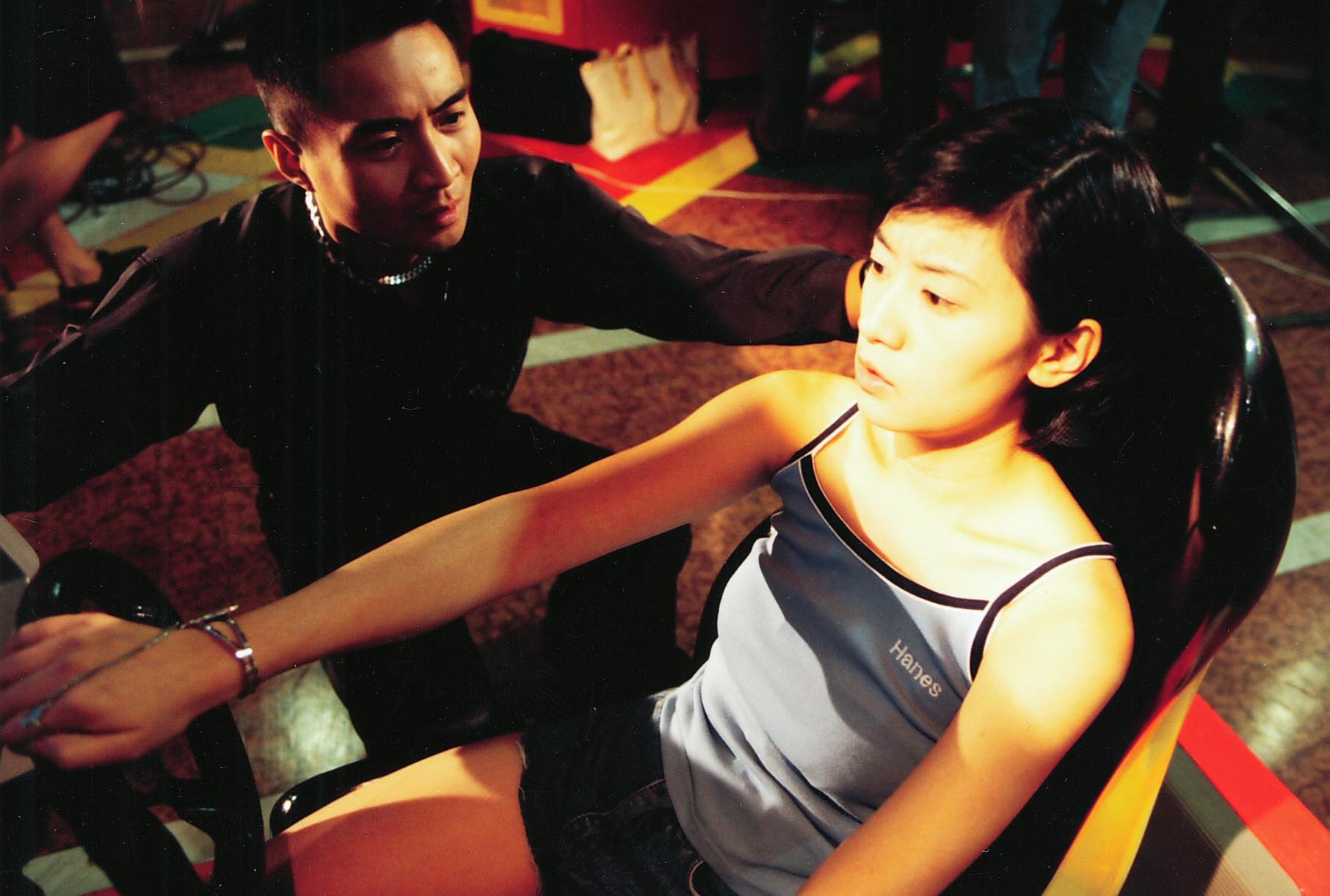| Azed
Yu
Feminist Films with Literary Touches: On Huang Yu-Shan’s
Films
Director Huang Yu-Shan is a teacher
that I have long admired and revered. From her, I see the passion, candidness
and sincerity that an image producer has. She manages to manifest the diversity
of a woman’s life with 24-frame images. And she dreams her movie dreams
in different positions: narrative movies like Autumn Tempest,
Twin
Bracelets, Peony Birds, Spring Cactus,
Portrait
of Restoring Light or documentaries like The Petrel Returns,
Chiang
Ching-Kao & Chiang Fong Liang,
Siu Shih-sian: The First
Woman Mayor in Taiwan, Siou Ze-lan: The First Woman Architect
in Taiwan, all show her hard working in this field. Now allow me
to crystallize the concept of “woman” with words, but let the images speak
for themselves.
Image Writing with Literary Touches
Huang is good at following a plot
of literary writing style to arrange her images in a narrative film. Images
permeating with symbols become a dominant motif of her films which are
titled accordingly. Pairs of peony birds symbolize birds of love; Wind
in Autumn Tempest serves as a metaphor for an ever changing
society and complicated romantic feelings. Twin bracelets are the token
for sisterhood. At the end of Autumn Tempest, the confused,
love-torn young man is blown into midair in a whirl of wind. This symbolizes
that a dubious relationship is cursed and entangled in a web of religious
and social conventions. In Peony Birds, Shu-cin in her coma
has visions of her father and sees her mother burning her self-portraits
in front of her father’s tomb. Her helpless face and self-portrait overlap.
Illustration of Woman
In her films, Huang likes to illustrate
woman’s exploration of erotic feelings in the depth of her soul. The woman
starts to care for herself, listening to her body’s needs. In Autumn
Tempest, Su-bi looks into the mirror and touches herself while
taking a shower. That symbolizes her desire or an outlet of her wants.
In Peony Birds, Shu-cin has a short hair-cut
which her boyfriend deems as the real her. Through the reflection in the
mirror, woman listens to her body’s needs, which is an important motif
in Huang’s narratives.
Woman has been rehabilitated by
Huang with the power of images. To rail against patriarchy, she highlights
the unfair treatment that woman has had. In Autumn Tempest,
Su-bi at the end has to get an abortion, but then she also refuses to go
back to her self-centered husband. In Twin Bracelets, Hui-hua
eventually commits suicide as a forceful way of protesting against patriarchy
and its values due to which she has been rejected. Although Siao-lan in
Spring
Cactus bravely fights for herself, unfortunately she becomes a
sacrificed woman working in the porn industry.

Siao-lan, the protagonist in
"Spring Cactus"
In Huang’s films, senior woman characters
are usually those who help to foster patriarchy. They educate their offspring
to be obedient and to accept the way things are. The housekeeper in charge
of the kitchen in Autumn Tempest teases or criticizes women
who don’t practice the expected “virtues”. The mother in Twin Bracelets
teaches her girls to sacrifice themselves in order to serve and obey man.
She even takes her daughter’s bride price to help the son marry his sweetheart.
A-Chan-jiuan’s mother in Peony Birds chooses to sacrifice
her daughter’s future to pay off the debt. The stepmother in Spring
Cactus despised Siao-lan because of her “occupation”. Therefore,
those who consolidate patriarchy are not necessarily men, but mothers or
a senior woman.
“Woman laboring” is a shared theme
of all her films. For instance, Su-bi in Autumn Tempest grows
vegetables in the temple almost non-stop. In Twin Bracelets,
those village women are always busy picking oysters or working in the kitchen.
In Peony Birds, A-Chan-jiuan and Shu-cin never stop working.
The woman characters in Huang’s films are always moving around restlessly
for their families, career, work and children.
Another theme is the suppression
of desires due to religion, ghosts or gods. In Autumn Tempest,
the hero and heroine are attracted to each other in a space where statues
of Buddha are always in sight. They represent the long existing confinement
or bondage of social value. Su-bi cannot let her feelings out under Buddha’s
gaze. In Twin Bracelets, Hui-hua and Siou-gu swear an oath
to be sisters forever before the Child-Birth Goddess who witnesses their
profound love. The Father in Spring Cactus symbolizes a god
and savior on earth. Religious belief is the only thing that brings peace
to Siao-lan.
Huang uses images and literary symbols
of different styles freely to uncover the inner world of a woman, making
the feelings of her woman characters deeper and more subtle. In her documentaries,
she takes the stance of humanism from different view points, showing her
concern for political or historical events and her advocacy of woman’s
rights.
A series of Huang’s works are going
to be shown in this year’s Kaohsiung Film Festival which is truly a rare
opportunity. Let us return to the world of images and indulge ourselves
in films to experience Taiwan’s female films—films of Huang Yu-shan.
Go back to AS
issue 12, Contents
|